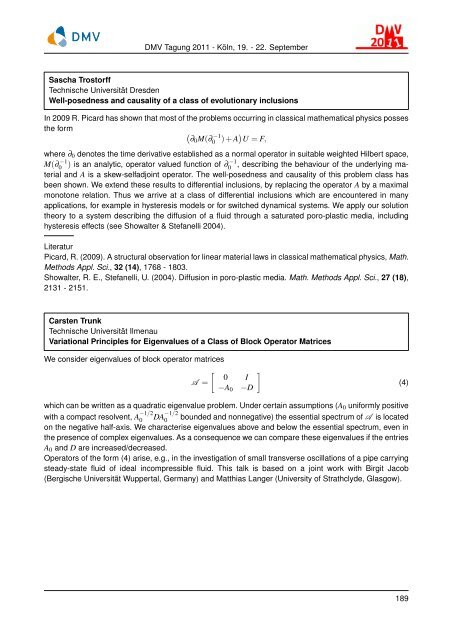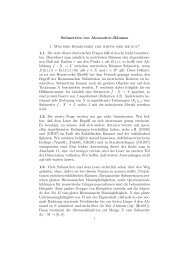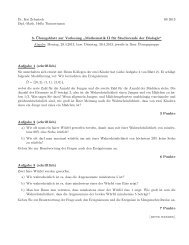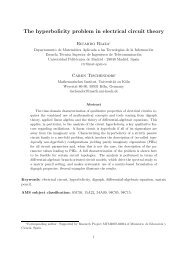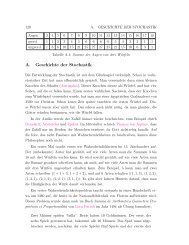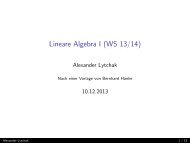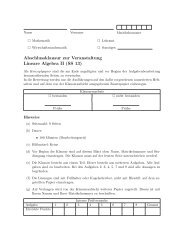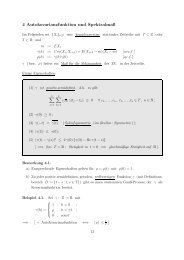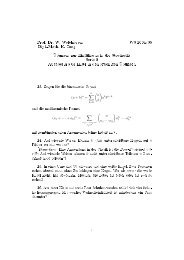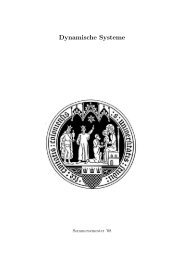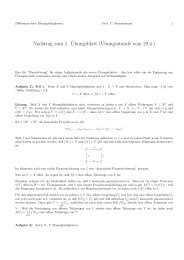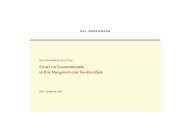Inhaltsverzeichnis - Mathematisches Institut der Universität zu Köln
Inhaltsverzeichnis - Mathematisches Institut der Universität zu Köln
Inhaltsverzeichnis - Mathematisches Institut der Universität zu Köln
Create successful ePaper yourself
Turn your PDF publications into a flip-book with our unique Google optimized e-Paper software.
DMV Tagung 2011 - <strong>Köln</strong>, 19. - 22. September<br />
Sascha Trostorff<br />
Technische <strong>Universität</strong> Dresden<br />
Well-posedness and causality of a class of evolutionary inclusions<br />
In 2009 R. Picard has shown that most of the problems occurring in classical mathematical physics posses<br />
the form<br />
� ∂0M(∂ −1<br />
0 ) + A� U = F,<br />
where ∂0 denotes the time <strong>der</strong>ivative established as a normal operator in suitable weighted Hilbert space,<br />
M(∂ −1<br />
−1<br />
0 ) is an analytic, operator valued function of ∂0 , describing the behaviour of the un<strong>der</strong>lying material<br />
and A is a skew-selfadjoint operator. The well-posedness and causality of this problem class has<br />
been shown. We extend these results to differential inclusions, by replacing the operator A by a maximal<br />
monotone relation. Thus we arrive at a class of differential inclusions which are encountered in many<br />
applications, for example in hysteresis models or for switched dynamical systems. We apply our solution<br />
theory to a system describing the diffusion of a fluid through a saturated poro-plastic media, including<br />
hysteresis effects (see Showalter & Stefanelli 2004).<br />
Literatur<br />
Picard, R. (2009). A structural observation for linear material laws in classical mathematical physics, Math.<br />
Methods Appl. Sci., 32 (14), 1768 - 1803.<br />
Showalter, R. E., Stefanelli, U. (2004). Diffusion in poro-plastic media. Math. Methods Appl. Sci., 27 (18),<br />
2131 - 2151.<br />
Carsten Trunk<br />
Technische <strong>Universität</strong> Ilmenau<br />
Variational Principles for Eigenvalues of a Class of Block Operator Matrices<br />
We consi<strong>der</strong> eigenvalues of block operator matrices<br />
�<br />
�<br />
0 I<br />
A =<br />
−A0 −D<br />
which can be written as a quadratic eigenvalue problem. Un<strong>der</strong> certain assumptions (A0 uniformly positive<br />
with a compact resolvent, A −1/2<br />
0<br />
DA−1/2<br />
0 bounded and nonnegative) the essential spectrum of A is located<br />
on the negative half-axis. We characterise eigenvalues above and below the essential spectrum, even in<br />
the presence of complex eigenvalues. As a consequence we can compare these eigenvalues if the entries<br />
A0 and D are increased/decreased.<br />
Operators of the form (4) arise, e.g., in the investigation of small transverse oscillations of a pipe carrying<br />
steady-state fluid of ideal incompressible fluid. This talk is based on a joint work with Birgit Jacob<br />
(Bergische <strong>Universität</strong> Wuppertal, Germany) and Matthias Langer (University of Strathclyde, Glasgow).<br />
(4)<br />
189


